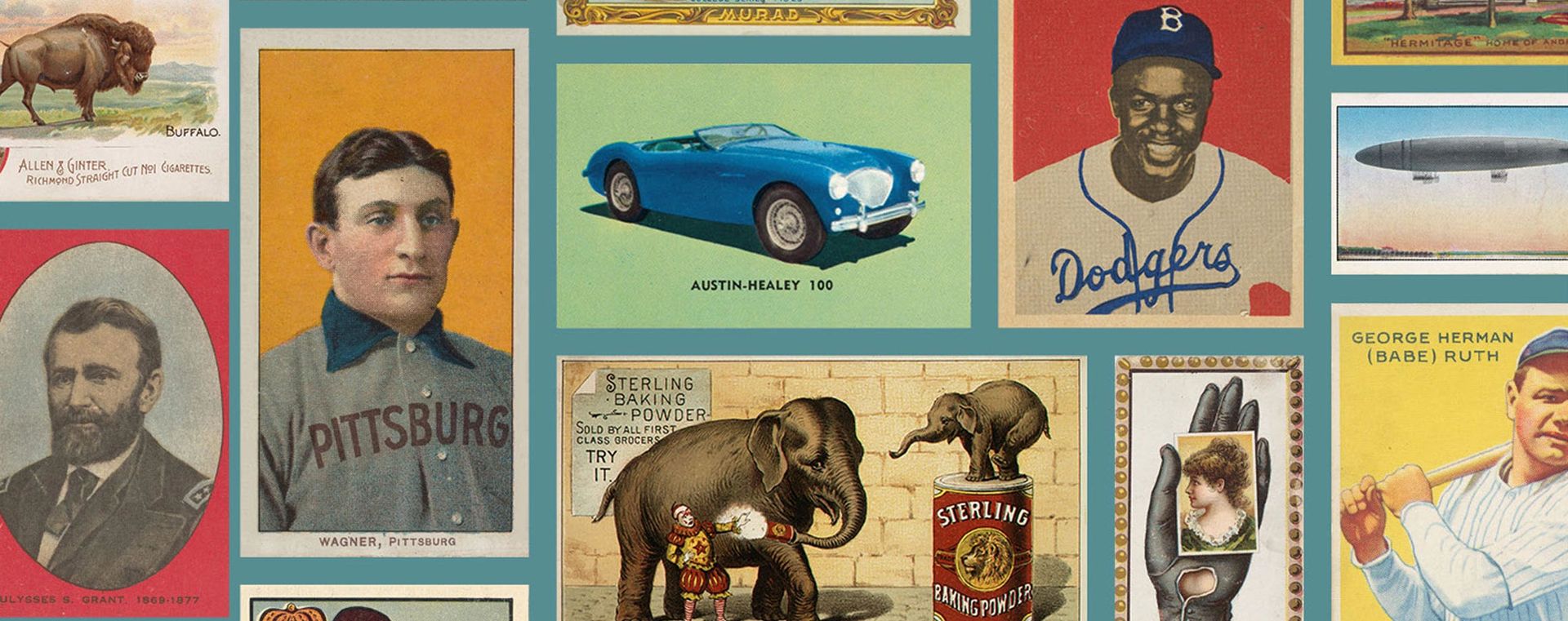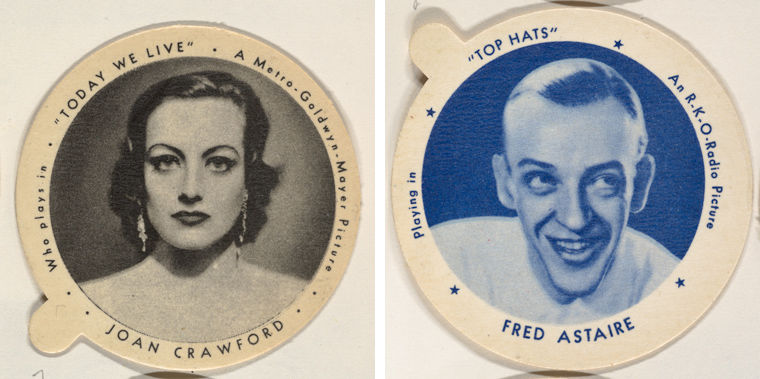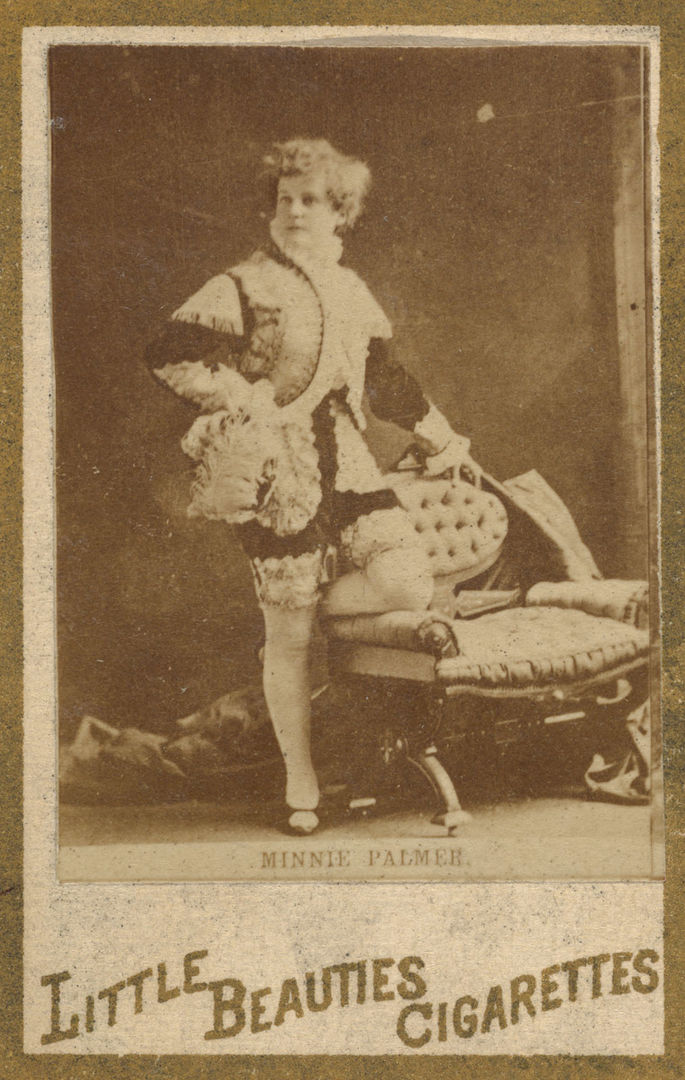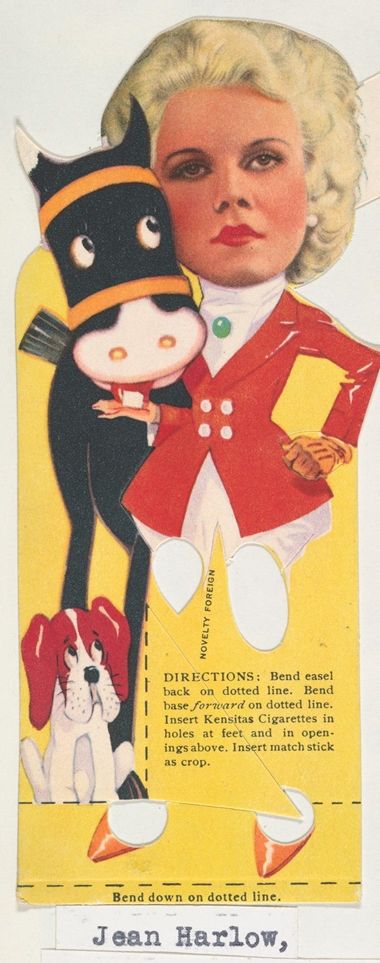
Famous Faces
Issued by Allen & Ginter (American, Richmond, Virginia). Minnie Palmer (standing beside chair), from the Actresses and Celebrities series (N60, Type 1) promoting Little Beauties Cigarettes for Allen & Ginter brand tobacco products, 1887. Albumen photograph; Sheet: 2 3/8 x 1 1/2 in. (6 x 3.8 cm). The Metropolitan Museum of Art, New York, The Jefferson R. Burdick Collection, Gift of Jefferson R. Burdick (63.350.202.60.10)
Jefferson Burdick's philosophy for acquiring printed matter was not restricted to one particular theme, but rather aimed to "collect general, as far as possible, as a wide interest means a wider circle of friends and the increased enjoyment of obtaining new items more frequently." While the sport cards have emerged as the most popular and widely seen portion of the material, they are by no means the only extensive grouping. Another dominant focus of Burdick's cards, and in advertising material and souvenir cards during the late nineteenth and early twentieth centuries, is the category of actors and actresses. Meticulously collected and catalogued by Burdick, these stage-and-screen celebrity cards document the progression of printed media, ranging from early albumen photographs to vibrantly colored lithographs.
In the latter half of the nineteenth century, photography emerged as a new medium and was widely used for portraits in advertising. In combination with advanced printing techniques, this led to a faster and more economical means to distribute images, thus bolstering the promotion of businesses and their products through trade cards. Early series of actors and actresses were commonly issued in packages of tobacco goods such as the 1887 Allen & Ginter issue for Little Beauties Cigarettes, which showed theatrical poses of famous stage figures including Minnie Palmer and Edwin Booth. In addition to being a vital advertising tool, the majority of the early celebrity cards were made in the style of the popular carte-de-visite—studio portraits intended to be collected and housed in albums to be displayed alongside those which held familiar images of family and friends.

Left: Issued by Individual Drinking Cup Company, Inc. Joan Crawford, from the Movie Stars series (F3), issued by the Individual Drinking Cup Company, Inc. for Supplee Ice Cream, 1933. Commercial color lithograph; Sheet: 2 5/16 x 2 5/16 in. (5.8 x 5.8 cm). The Metropolitan Museum of Art, New York (Burdick 308, F3.7). Right: Issued by Individual Drinking Cup Company, Inc. Fred Astaire, from the Movie Stars series (F3), issued by the Individual Drinking Cup Company, Inc. for Wisconsin Creameries Ice Cream, 1935. Commercial color lithograph; Sheet: 2 5/16 x 2 5/16 in. (5.8 x 5.8 cm). The Metropolitan Museum of Art, New York (Burdick 308, F5.5)
At the turn of the century, lithography gained ground as the more efficient and engaging medium for producing trade cards. Through Burdick's collection, one can chart the careers of many of the silver screen's most notorious stars as well as learn about the lesser-known personalities that graced early films.
While these cards were still being inserted into popular products as a means to entice potential consumers, new ways of packing began to emerge. In 1933, Dixie Cup started printing head shots of movie stars such as Joan Crawford and Clark Gable on lids of individual ice cream cups for various companies. This initiative proved extremely successful and encouraged other ice cream manufacturers to adopt creative variations of the Dixie lid, as seen in color, placement, and types of celebrities. Lucky Strike issued a series in the 1930s with brightly colored cartoon drawings of Douglas Fairbanks, Jr., and Jean Harlow, among others, that were printed on cards meant to be used to tally points for bridge games.
Left: Issued by Gallaher Group. Jean Harlow, from the Place Favors series (T14), issued by the Gallaher Group for Kensitas Cigarettes, 1930s. Commercial color lithograph; Sheet: 5 1/4 x 2 1/16 in. (13.4 x 5.2 cm). The Metropolitan Museum of Art, New York (Burdick 242, T14.31)

